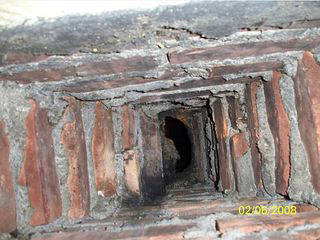
by blogediter | May 20, 2019 | Fireplaces
Q: Jason, I’m originally from Florida and don’t know anything about fireplaces. I just bought a house in Utah and there is a very ugly wood burning furnace/insert in the fireplace. We plan to eventually put a gas insert there because air quality is bad in Salt Lake and we will never burn wood. So, we want to remove this fireplace insert monster but have no idea if there will be a flue/damper remaining in the chimney because there is already one that is a part of the insert.
My question is – should we put a damper on and then buy a Chimney Balloon? If we use a Chimney Balloon, do we need a flue/damper? If we need a damper, what type works well with a Chimney Balloon? – BU
A: Dear BU, I have good news and bad news for you in the damper department.
The Bad news; when you remove your insert you will very likely remove the damper as well. Most of the time when a fireplace insert is put in, the original fireplace damper is removed. There is usually a damper built right into the insert. Occasionally there is a throat butterfly damper as well but that is mostly with free standing stoves, not inserts. So let’s assume when you remove your insert you will have no damper.
The Good News: You can put a Chimney Balloon in the flue without a damper. On this website, we show all kinds of diagrams of how to install a Chimney Balloon around or with a damper because in most American fireplaces they have one. But if you have no damper it is actually easier to put in a Chimney Balloon because you have no hardware to contend with. So just measure the lowest spot in the flue that has parallel walls, and buy a Chimney Balloon that will fit that spot.
Let me know if you have more questions, I am happy to help. – Jason
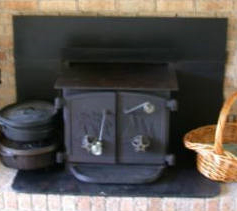
by blogediter | May 17, 2019 | Chimney Problems, Fireplaces
Q: Jason, On warmer winter days and rainy days, we have a strong smoke smell in the house. We have a fireplace insert. Would the Chimney Balloon help with this problem?- SQ
A: Dear SQ, The first thing you can do to cut down on smoke smell during the humid days is first to clean the ash out of the fireplace insert with a shop vac. Humidity has a bad habit of making soot, creosote, and ash to smell stronger.
Some people are under the misconception that a chimney sweeping or cleaning will remove this burnt smell, and I have not found that to be the case. Chimney sweeping is good and should be done regularly, but the brushing action often stirs up the creosote and ash in the flue making it stronger smelling for a while.
The next step is to separate your flue from the house by sealing it off. A Chimney Balloon will work to stop the smelly fireplace stink if you can access the chimney flue opening. Some inserts have metal baffles in the firebox that prevent access to the chimney flue from the firebox. However, there should be a way to access your flue since a chimney sweep has to do this in order to sweep the chimney and then get the ash he brushed off out. You may want to ask your sweep how he accesses your lower flue to remove the ash he brushes off the flue wall. There may be an ash clean-out or removable portion of your flue pipe that you are unaware of. If you can touch the inside of the flue or damper opening area then you can install the Chimney Balloon and it will seal off the chimney low and tight and will not allow the creosote buildup in the chimney to stink up the house.
If you still have a smell to deal with it is probably from the firebox. To further neutralize any lingering smell, you can use a large salad bowl of white vinegar. Just put a good amount of vinegar in the bowl and set it in the firebox for a day or two. This can also do a great job of neutralizing the fireplace burnt smell.
If you need to go one step further, you can also treat the firebox with baking soda (just remember to remove the vinegar bowl first). Sprinkle baking soda liberally over the floor and walls of the firebox. Let it set a few days and then vacuum it off. – Jason
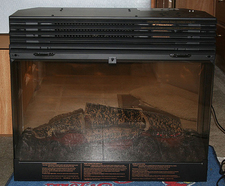
by blogediter | Dec 12, 2018 | Chimney Plugs
Electric Fireplace
Q: Jason – I installed one of those cool electric hologram type fireplace inserts into my wood burning fireplace. I have a cold draft that is coming down the chimney and it seeps out around the electric fireplace box insert.
I was told by the installer that he stuffed the flue full of fiberglass batting, but if I still have a draft. He told me I should remove the fiberglass and put in a Chimney Balloon. Can I install a Chimney Balloon and then put my electric fireplace insert back in place? – PR
A: Dear PR, Fiberglass is a rotten air barrier if you have a location that has air movement (like a Chimney). A Chimney Balloon will work just fine above your electric fireplace insert. Before you install the insert, be sure to install your Chimney Balloon high enough into the fireplace flue so it does not come in contact with the insert. Also, remember to remove the inflation tube after inflating the Chimney Ballon in place so it doesn’t hang down in the way. Wait 24 hours after you install the Chimney Balloon and check the Chimney Balloon again. This will ensure you installed it properly and solidly and it is working properly before you slide in the electric fireplace insert. Then take a peek at the Chimney Balloon every year or two just to top it off with air if needed.
Most of these electric inserts are closed systems so they put no heat up the flue at all (see the image above that the top is flat and it is fully encased), If you unit is encased, you just want to make sure the heating element and fan will not come in contact with the Chimney Balloon.
We have had many customers buy a Chimney Balloon for this type of electric fireplaces application. I have a family member with an electric fireplace that was installed as an insert in his old wood fireplace. I helped him put a Chimney Balloon in his flue as well for the same reasons you are stating. I think electric fireplaces are great and add a nice ambiance, but have no venting issues. – Jason
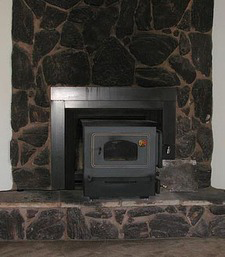
by blogediter | Nov 12, 2018 | Chimney Plugs
Bad Insert
Q: Jason – The wife is interested in getting a wood burning insert for the fireplace. We’re regular users of our fireplace and keep a supply of inexpensive hardwoods around. With upcoming increases in electricity costs around here, we thought it was about time that we sunk the $4-5K into a wood burning insert.
A: DW – Since your goal is to save money on heat and you mention your concern about electrical prices…I have to assume your home is now heated by electrical heat. Is that correct?
Well, if your goal is to save heat and therefore save money I would probably point you in an entirely different direction. First of all, stop using the fireplace for heat. Due to the stack effect in your home and the draw of combustion and rising air from the fire you are losing more heat than you are creating. Fireplaces are notoriously inefficient. The Department of Energy estimates using a fireplace raises your heat energy costs by 10% on average. The best thing you can do is plug the flue with a Chimney Balloon and look for other options.
Your other installed option, electric heat, is the second most inefficient type of standard heating. So I would also steer you from using that.
You could go with a fireplace insert and have the hassle of consuming wood, the maintenance of maintaining a clean flue and chimney, the constant feeding of the fire and the increased home insurance rates. With this option, you can get an average 60% efficiency for your labors. See below for a picture of a bad hack job of a fireplace insert install that leaks smoke. This picture is not my house, By the way.
Or, you could go a more traditional route by applying your money to a direct vent gas furnace and ducting that will give you a 90% efficiency. Granted this may cost you more since ductwork has to be laid, but it will be less laborious and costly than any other option in the long run. You won’t need a chimney either since it can be vented easily through the side of the house in a minimally invasive way.
I considered the very question you were pondering about 4 years ago when I had an aged furnace and an open fireplace. I decided to plug the fireplace tightly with a Chimney Balloon to stop the heat loss through the bad damper and flue and upgrade the furnace to a direct vent 90% efficient. I have been so happy with this decision, and I would do the exact same thing again if I had the choice. I hope you find this input/testimony helpful – Jason
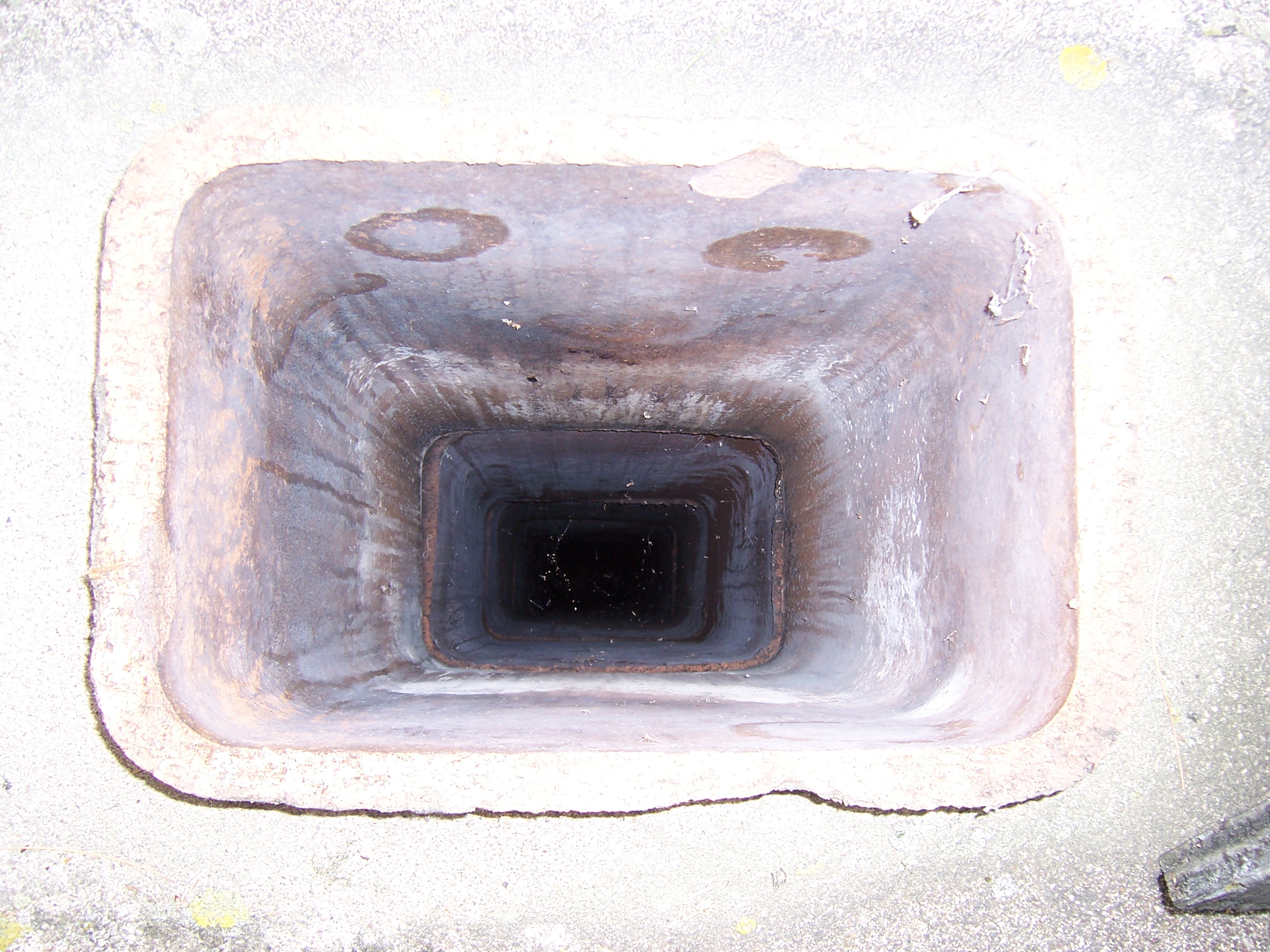
by blogediter | Oct 1, 2018 | Chimney Problems
Chimney noise stoppers
This was a post about Chimney balloons as a noise stopper or noise barrier found on Google groups at this link: I thought it was interesting. http://groups.google.com/group/alt.home.repair/browse_thread/thread/5d0efc3c31e9eac4?hl=en
Q: I’m having troubles with my fireplace insert. I’m having a quite tall chimney and for some reason, there’s no top or bottom damper in the chimney. When’s a windy weather, it makes very unpleasant noise in the fireplace insert, I hear the wind very loud. How can this be solved, please? – Matt
A: I was having trouble with street noise and pigeon cooing noise coming from my fireplace chimney. It was quite annoying, especially at night. I put in a Chimney Balloon to buffer the noise and it has helped quite a bit. It seems to have stopped some of the cold air passage as well. I also put out some of those pigeon spikes near the top of the chimney but that didn’t deter the little flying rats.




